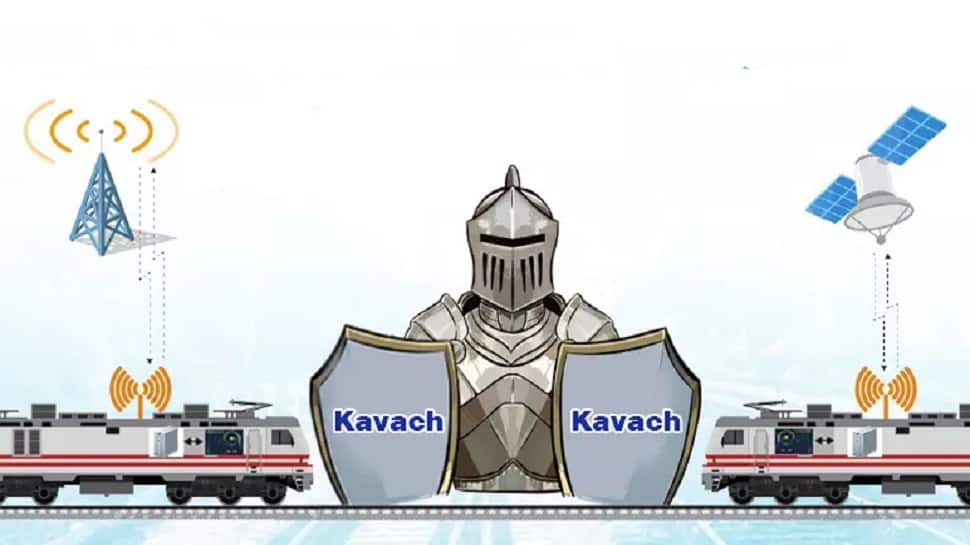On June 2, 2023, three trains of the Indian Railways, including two express trains and a goods train were involved in a tragic accident, that resulted in the death of more than 200 people and over 500 were injured. The accident involved Train no. 12841 Shalimar-Chennai Coromandal Express and Train no. 12864 SMVB – HWH Superfast Express, both of which got derailed near the Bahanaga Bazaar Railway station in the Balasore district of Odisha at around 18.55 Hrs on Friday. A lot of people on Twitter are asking the Railway Minister Ashwini Vaishnaw why the indigenous anti-collision technology 'KAVACH' didn't stop the accident from happening?
The railways has initiated a high-level probe into the train crash in Odisha, which will be headed by the commissioner of railway safety, South Eastern Circle, officials said on Saturday. The commissioner of railway safety works under the Ministry of Civil Aviation and investigates all such accidents. "A M Chowdhary, CRS, SE Circle, will inquire into the accident," a spokesperson of the Indian Railways said.
The national transporter has also said anti-train collision system "Kavach" was not available on the route. While it is not clear what caused the crash, sources indicated a possible signalling failure. "The rescue operation has been completed. Now, we are starting the restoration work. Kavach was not available on this route," Indian Railways Spokesperson Amitabh Sharma said. The railways is in the process of installing "Kavach", an anti-train collision system, across its network.
What Is KAVACH Technology?
KAVACH is an anti-collision technology developed in India to prevent train accidents. This anti-collision technology reduces the chances of an error to the margin of a single error in 10,000 years. Affirming the facts, Railway Minister Ashwini Vaishnaw previously said, "The indigenously-developed anti-collision technology is SIL4 certified, which means there is the probability of a single error in 10,000 years."
The KAVACH technology, in more technical terms, is known as Train Collision Avoidance System (TCAS) or Automatic Train Protection System (ATP) system. It is aimed at bringing down the number of rail accidents to zero. The technology has also received a SIL4 certification, reinforcing that it can reduce the chances of error to one in 10,000 years.
As the gate approaches, Kavach automatically initiates whistling without any intervention from the driver.
Auto whistle test is done successfully. #BharatKaKavach pic.twitter.com/02WrSJ1MYl— Ashwini Vaishnaw (@AshwiniVaishnaw) March 4, 2022
Did 'KAVACH' Fail?
The KAVACH technology has proved its effectiveness in multiple tests conducted by the Indian Railways and the chances of failure of the anti-collision technology is one error in 10,000 years. So why the accident took place despite Indian Railways having such incredible technology? The simple answer is that the KAVACH technology is not yet installed on the entire rail network of India and this section was without the KAVACH technology as well.
During the Budget 2022, Finance Minister Nirmala Sitharaman announced protecting the 2,000 km railway network in India by KAVACH technology in FY 2022-2023. In her statement, the Finance Minister said, "As a part of Atmanirbhar Bharat, 2,000 km of the rail network will be brought under the indigenous world-class technology KAVACH in 2022-23, for safety and capacity augmentation."
However, the railway network spans across more than 60,000 km and hence, it will take time to install KAVACH India-wide. That's why the work is being done on the priority sections of the Railways. Also, KAVACH is made to avoid head on collisions between engines of two trains approaching on the same track. In this case, Train no. 12864 SMVT Bengaluru – Howrah Superfast Express derailed and crossed the adjacent track from where the Coromandal Express was passing.
While initial reports suggested that the Coromandal Express train collided head-on with a goods train causing the derailment of four coaches of the superfast passenger train, Railway officials denied it. Since all the trains derailed, KAVACH technology couldn't have possibly worked in such a case.
Many have been asking this question. The Railways do have an indigenous Automatic Train Protection (ATP) System called Kavach, developed by the Research Designs and Standards Organisation (RDSO). Apparently it hadn’t been installed on the route in which this accident occurred.… https://t.co/XIFdjBpsFU
— anand mahindra (@anandmahindra) June 3, 2023
Anand Mahindra, the Chairman of Mahindra Group tweeted on the issue stating, "Many have been asking this question. The Railways do have an indigenous Automatic Train Protection (ATP) System called Kavach, developed by the Research Designs and Standards Organisation (RDSO). Apparently it hadn’t been installed on the route in which this accident occurred. So perhaps an initiative is required to examine if Kavach needs any ‘scope enhancement’ and then provide resources to install it on a war footing throughout the network"
How Does KAVACH Work?
KAVACH uses a network of devices mounted on two trains moving towards each other to avoid a collision. The devices work with the help of radio technology and Global positioning systems (GPS). This system avoids the risk of collision by precisely assessing the course of two trains at "collision risk" and automatically initiating the braking system.
Basically, this technology warns the loco pilots about any incoming train, and stops the train automatically, by applying the emergency brakes. This happens when two trains are approaching each other on the same track. In this case, one train derailed on another track, resulting in such a massive incident.
Kavach alerts when a loco pilot jumps a signal (Signal Passed at Danger -- SPAD), which is the leading cause of train collisions. The system can alert the loco pilot, take control of the brakes and bring the train to a halt automatically when it notices another train on the same line within a prescribed distance.

















